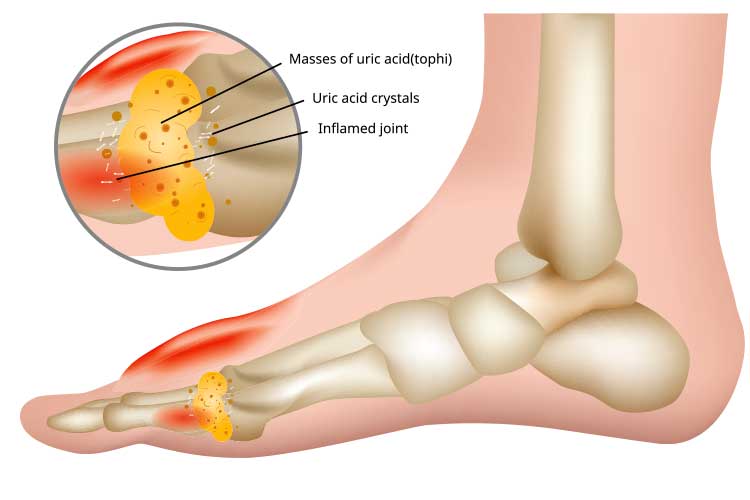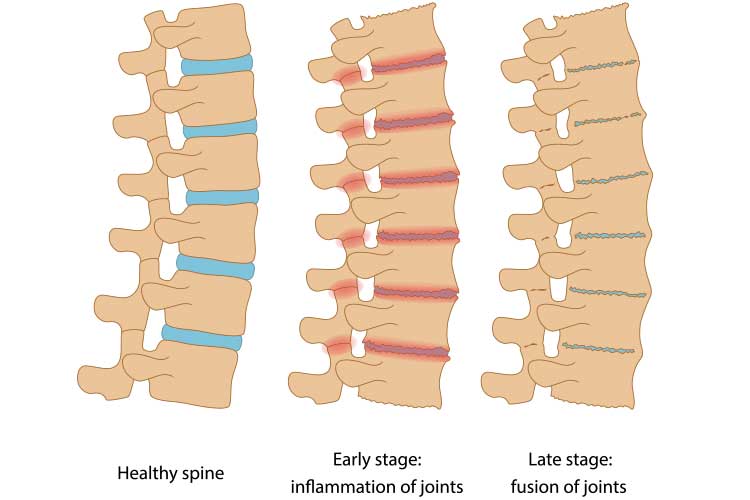With its prevalence on the rise in Australia, is arthritis on your radar?
Arthritis refers to a group of inflammatory conditions affecting the body’s joints. In varying ways, these conditions damage the articulations, causing considerable pain, stiffness and discomfort.
Though many people live with arthritis, it should not prevent them from enjoying a happy and productive life. Arthritis can be managed well by working closely with a healthcare team and making positive lifestyle changes (Better Health Channel 2024a).
However, if mismanaged, arthritis can significantly impact a person’s quality of life and wellbeing (AIHW 2024).
How Prevalent is Arthritis in Australia?
An estimated 4.11 million Australians have arthritis, with this number expected to increase to 5.39 million by 2040 (Arthritis Australia 2025).
Types of Arthritis
There are over 100 types of arthritis. Each type affects the joints differently, and the degree of pain will vary between patients (Arthritis Australia 2024a).
Some forms of arthritis can also involve parts of the body you might not expect, such as the eyes. The most frequently diagnosed forms of arthritis are:
- Osteoarthritis
- Rheumatoid arthritis
- Gout
- Ankylosing spondylitis.
(Arthritis Australia 2024a)

Osteoarthritis
Read: Osteoarthritis Care and Management
Perhaps the most recognised form of arthritis is osteoarthritis, a chronic condition characterised by the deterioration of cartilage that overlies the ends of bones in joints (AIHW 2024).
Roughly 2.1 million Australians (8.3%) have osteoarthritis (AIHW 2024).
Rheumatoid Arthritis
Rheumatoid arthritis is a systemic autoimmune disease in which the body’s immune system attacks its own tissues. (Healthdirect 2023).
About 514,000 Australians (2%) are reported to have rheumatoid arthritis (AIHW 2024).
Females represent a higher proportion of cases of both osteoarthritis and rheumatoid arthritis (AIHW 2024).
Gout
Read: Gaining an Understanding of Gout
Gout is a form of arthritis caused by excess uric acid in the bloodstream. Uric acid, which is a normal waste product, builds up in the bloodstream and forms urate crystals in a joint, resulting in inflammation (Better Health Channel 2024b).
About 0.9% of Australians are estimated to have gout (AIHW 2024).

Ankylosing Spondylitis
Ankylosing spondylitis (ankylosing means stiffening or joining together, and spondylitis means inflammation of the vertebrae) is a chronic immune-mediated inflammatory arthritis that exists within the group of spondyloarthritis (Healthdirect 2025; Better Health Channel 2024c).
It primarily affects the spine and neck. The joints of the neck, back and pelvis become inflamed, causing pain and stiffness (Healthdirect 2025; Better Health Channel 2024c).

Common Symptoms of Arthritis
Arthritis affects each person differently, and symptoms are dependent on the type of arthritis, but those that are generally cited include:
- Acute or general pain
- Stiffness and/or reduced movement of a joint
- Swelling in a joint
- Redness and warmth around a joint
- General symptoms, including tiredness, malaise and weight loss.
(Arthritis Australia 2024a)
Diagnosing Arthritis
In order to be able to diagnose a particular type of arthritis, multiple exams and tests are recommended, including:
- A physical examination to search for redness and swelling in and around the joint, as well as to assess the range of movement of the joints.
- A detailed medical history examining symptoms, family history and other health problems.
- Scans and tests, including blood tests and scans such as x-rays, ultrasound, computed tomography and/or MRI.
- Referral to a specialist, usually a rheumatologist, for both diagnosis and specialised management of the condition.
(Better Health Channel 2024a)

How to Help Patients Manage Pain
Arguably, the most difficult part of living with arthritis is dealing with the (possibly daily) pain that ensues.
Types of arthritis pain include:
- Joint pain - aching, stiffness and soreness
- Inflammatory pain - redness, heat and swelling in joints
- Nerve pain - burning, tingling and numbness in the affected area
- Muscular pain - aching, stiffness and tension.
(The Arthritis Movement 2023)
There is a range of options available for patients experiencing pain. They include:
- Medicines
- Getting adequate sleep
- Eating a balanced diet
- Exercise
- The application of heat and cold
- Massage
- Acupuncture
- Transcutaneous electrical nerve stimulation
- Mindfulness and meditation techniques..
(Arthritis Australia 2023a)
Medical Management of Arthritis
There is a range of medical intervention options for people living with arthritis, including:
- Medicines: A range of medications is available, depending on the condition
- Engaging with healthcare teams such as general practitioners, specialists (such as rheumatologists or orthopaedic surgeons) and allied health professionals
- Blood examinations: Blood tests can confirm a diagnosis, monitor disease severity and reaction to treatment, and help to reveal side effects from other medicines
- Surgery: There are different types of surgery available, including:
- Surgery that fuses bones together
- Key-hole surgery
- Osteotomy - repositioning or cutting a bone
- Resection - removal of part of the bone or joint
- Joint replacement
- Synovectomy - removal of the lining of a joint.
(Arthritis Australia 2023a, 2024b, c)
How Can You Help Someone Living with Arthritis?
Encourage your patients to research and understand their particular type of arthritis. This will empower them with a sense of control and will give them a better sense of their treatment options.
Patients are encouraged to seek treatment advice immediately, as the condition may worsen over time. Early diagnosis and treatment are crucial.
A sedentary lifestyle will negatively affect those living with arthritis. Regular, low-impact exercise is often prescribed as it is recognised as one of the most effective treatments for arthritis. Obviously, not all forms of exercise are suitable, so an exercise plan will need to be carefully formulated and tailored to the individual.
Encourage patients to acknowledge and express their feelings. It’s likely that they will experience a mix of emotions, including fear, anger and frustration - this is normal. It may be worth encouraging patients to seek counselling in order to talk about and process their emotions (Arthritis Australia 2023b).
Test Your Knowledge
Question 1 of 3
What is the primary characteristic of osteoarthritis?
Topics
References
- Arthritis Australia 2023a, Dealing with Pain, Arthritis Australia, viewed 28 July 2025, https://arthritisaustralia.com.au/managing-arthritis/living-with-arthritis/dealing-with-pain/
- Arthritis Australia 2023b, 10 Steps for Living Well with Arthritis, Arthritis Australia, viewed 28 July 2025, https://arthritisaustralia.com.au/managing-arthritis/living-with-arthritis/10-steps-for-living-well-with-arthritis/
- Arthritis Australia 2024a, Understanding Arthritis, Arthritis Australia, viewed 28 July 2025, https://arthritisaustralia.com.au/what-is-arthritis/understanding-arthritis/
- Arthritis Australia 2024b, Blood and Pathology Tests for Arthritis, Arthritis Australia, viewed 28 July 2025, https://arthritisaustralia.com.au/managing-arthritis/medical-management/blood-test-for-arthritis/
- Arthritis Australia 2024c, Surgery for Arthritis, Arthritis Australia, viewed 28 July 2025, https://arthritisaustralia.com.au/managing-arthritis/medical-management/surgery-for-arthritis/
- Arthritis Australia 2025, Fast Facts, Arthritis Australia, viewed 28 July 2025, https://arthritisaustralia.com.au/what-is-arthritis/fastfacts/
- The Arthritis Movement 2023, ‘Understanding Pain and Arthritis: Exploring the Connection’, Arthritis Insights, 7 July, viewed 28 July 2025, https://www.arthritis.org.au/arthritis/arthritis-insights/caring-for-your-joints/understand-pain-and-arthritis/
- Australian Institute of Health and Welfare 2024, Chronic Musculoskeletal Conditions, Australian Government, viewed 28 July 2025, https://www.aihw.gov.au/reports-data/health-conditions-disability-deaths/chronic-musculoskeletal-conditions/overview
- Better Health Channel 2024a, Arthritis Explained, Victoria State Government, viewed 28 July 2025, https://www.betterhealth.vic.gov.au/health/conditionsandtreatments/arthritis
- Better Health Channel 2024b, Gout, Victoria State Government, viewed 28 July 2025, https://www.betterhealth.vic.gov.au/health/conditionsandtreatments/gout
- Better Health Channel 2024c, Ankylosing Spondylitis, Victoria State Government, viewed 28 July 2025, https://www.betterhealth.vic.gov.au/health/conditionsandtreatments/ankylosing-spondylitis
- Healthdirect 2023, Rheumatoid Arthritis, Victoria State Government, viewed 28 July 2025, https://www.healthdirect.gov.au/rheumatoid-arthritis
- Healthdirect 2025, Ankylosing Spondylitis, Victoria State Government, viewed 28 July 2025, https://www.healthdirect.gov.au/ankylosing-spondylitis
 New
New 
